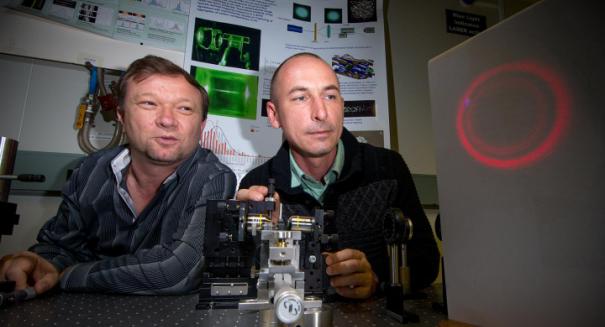
Scientists have designed a laser that can move an object by manipulating the heat energy of its surface.
Scientists have designed a laser that can move an object by manipulating the heat energy of its surface. In the experiment, researchers moved a gold coated hollow sphere about one fifth of a millimeter across a distance of up to 20 cm, or almost 8 inches.
The work was conducted by Cyril Hnatovsky and Vladlen Shvedov at the Australian National University at Canberra and published in Nature Photonics. The experiment shattered the previous record of distance covered by tracking beam by a factor of almost a hundred. But the technique has the potential to be scaled up to cover greater distances.
“Because lasers retain their beam quality for such long distances, this could work over meters. Our lab just was not big enough to show it,” said Shvedov.
In order for movement to occur, the hollow laser beam interacts with the surface of the object, heating the sphere along its edges. As air from inside the sphere collides at random with the outside edge, it reflects away with greater thermal energy, and the recoil force acts on the sphere’s surface creating motion.
Scientists call this force the photophoretic force and it can be manipulated to work in operate directions based on the polarization of the laser. For example, the beam can be oriented in either a radial or azimuthial polarization, reversing the direction of the photophoretic force.
Past tracking beam techniques used the momentum of photons to propel objects, whereas this technique in not only reversible but reversible using a single laser beam.
In future, these beams could be used in studying atmospheric pollutants or retrieving delicate particles of material for examination, such as nanoparticles, BBC news reports.
Leave a Reply